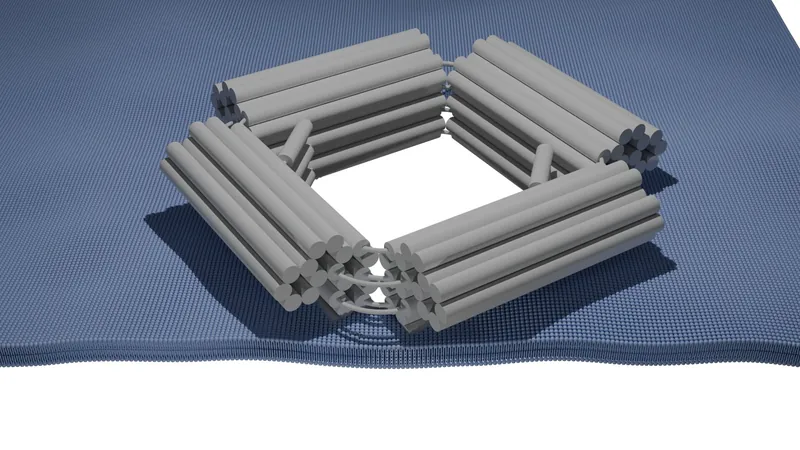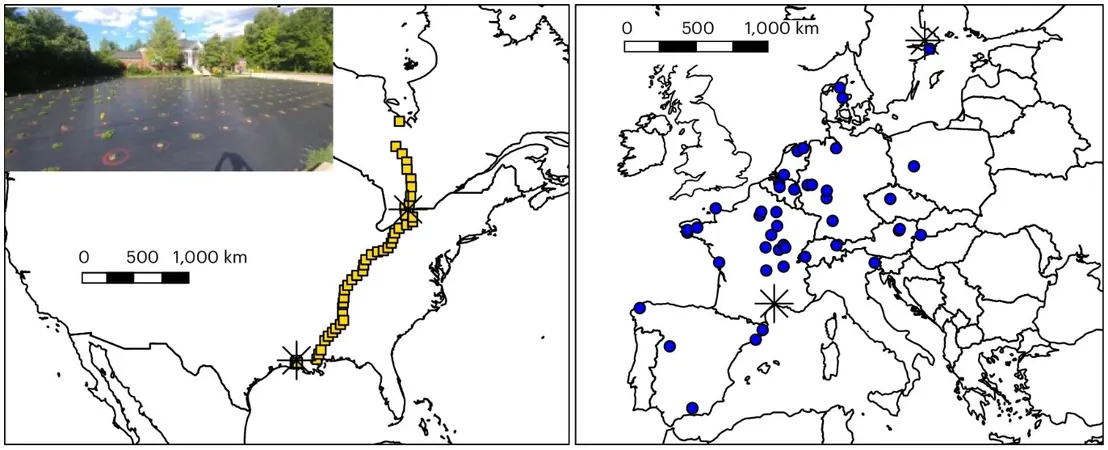
Breakthrough in Drug Delivery: Novel DNA Nanopores That Open and Close On Command!
2024-10-01
Author: Yu
In an exciting development, scientists from TU Delft and the Max Planck Institute have unveiled an innovative class of DNA-based nanopores that are capable of dynamically opening and closing on demand, offering unprecedented control over drug delivery. With their ability to adjust their diameter, these "mechanical" nanopores pave the way for significant advancements in biomedical applications, particularly for the selective transport of macromolecules such as therapeutics.
Published in the reputable journal Advanced Materials, this groundbreaking research discusses how these structurally adaptable nanopores can now transport larger molecules through cell membranes more effectively than traditional methods, which typically feature narrow openings unsuitable for bulky drugs.
Ze Yu, a postdoctoral researcher involved in the study, notes that DNA origami nanopores have previously shown immense promise in biophysics and biotechnology, primarily for analyzing proteins. However, conventional designs were too restrictive, continually remaining open and thus limiting their effectiveness for targeted drug administration.
Remarkable Design and Mechanism of Action
In collaboration with the Heuer-Jungmann lab at the Max Planck Institute of Biochemistry, Caneva and her team engineered these new nanopores, known as MechanoPores, with an impressive 30-nanometer opening—far wider than the standard 4-5 nanometers. This substantial increase in size allows for the efficient passage of larger therapeutic molecules.
Yu remarks, "DNA serves as a fantastic material for constructing intricate structures on a nanoscale. We harness the hydrogen bonds between complementary base pairs to create precisely shaped DNA strands." This capacity enables the construction of complex, programmed 2D and 3D formations through DNA origami techniques.
One of the key challenges faced was enabling the pores to open and close on demand. The team cleverly utilized the flexible properties of single-stranded DNA, creating a mechanism reminiscent of compliant mechanisms. The internal structure of the pore features a single-stranded DNA molecule on both sides, allowing for significant alterations in size when interacted with compatible DNA strands.
When a complementary strand is introduced, it forms a stiffer double-stranded molecule, effectively pushing the pore open and permitting larger biomolecules to flow through. To trigger closure, complementary single strands are added, prompting the pore to constrict.
Size Selectivity and Future Applications
Yu highlights that this pioneering nanopore is the first of its kind to systematically transition between three different diameters, enabling it to selectively filter molecules based on size. This capability was confirmed by fluorescence imaging, which tracked the movement of molecules through the MechanoPorous structures embedded in membranes—a feat that had not been successfully accomplished prior to this study.
Assistant Professor Sabina Caneva emphasizes the significance of this research, stating, "Our work represents a substantial stride toward developing dynamic nanodevices, essential for applications in controlled drug delivery and molecular diagnostics, where precise transport of biological macromolecules through stable, expansive channels is pivotal."
Looking to the future, the team intends to refine the selection process beyond size, aiming to distinguish proteins of similar sizes using their molecular composition. "We aspire to differentiate these proteins based on their unique molecular characteristics, enhancing the selectivity of substance transport through our nanopore technology," asserts Yu.
This breakthrough in DNA nanopore technology not only represents a remarkable advancement in the realm of drug delivery systems but could also unlock new pathways for personalized medicine, targeting therapies based on the specific needs of individual patients. Keep an eye on these developments—this could change the landscape of medicine forever!




 Brasil (PT)
Brasil (PT)
 Canada (EN)
Canada (EN)
 Chile (ES)
Chile (ES)
 Česko (CS)
Česko (CS)
 대한민국 (KO)
대한민국 (KO)
 España (ES)
España (ES)
 France (FR)
France (FR)
 Hong Kong (EN)
Hong Kong (EN)
 Italia (IT)
Italia (IT)
 日本 (JA)
日本 (JA)
 Magyarország (HU)
Magyarország (HU)
 Norge (NO)
Norge (NO)
 Polska (PL)
Polska (PL)
 Schweiz (DE)
Schweiz (DE)
 Singapore (EN)
Singapore (EN)
 Sverige (SV)
Sverige (SV)
 Suomi (FI)
Suomi (FI)
 Türkiye (TR)
Türkiye (TR)
 الإمارات العربية المتحدة (AR)
الإمارات العربية المتحدة (AR)